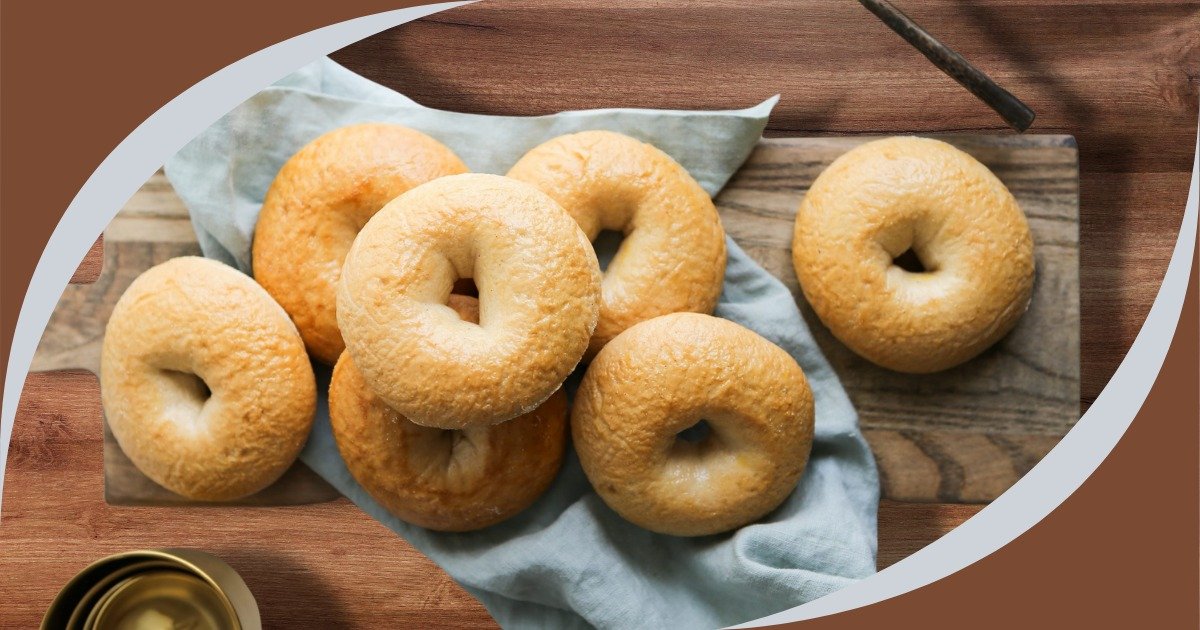In recent years, gluten free diets have gained traction among those seeking healthier eating options or dealing with gluten sensitivities. Among the many delightful treats that have emerged in the gluten-free world, gluten-free bagels stand out as a favorite for many. For those who miss the chewy texture and comforting taste of traditional bagels, gluten-free alternatives provide a satisfying solution. This guide explores everything you need to know about gluten free bagels, including their benefits, recipes, and tips for enjoying them.
What Are Gluten-Free Bagels?
Gluten-free bagels are crafted specifically for those who cannot consume gluten, a protein found in wheat and related grains like barley and rye. These bagels use alternative ingredients to achieve a texture and flavor similar to traditional bagels. Popular flours used in gluten-free bagel recipes include almond flour, coconut flour, and gluten-free all-purpose flour. Almond flour is favored for its nutty flavor and high protein content, while coconut flour adds a slight sweetness and fiber.
In terms of preparation, gluten-free bagels follow a similar process to traditional bagels but with some modifications. The dough is typically less elastic, so it may require careful handling. Many recipes incorporate binding agents like xanthan gum or psyllium husk to help improve the texture. Additionally, gluten-free bagels may require longer cooking times or different baking techniques to achieve the perfect chewy crust.
For those who prefer convenience, numerous brands offer pre-made gluten-free bagels in various flavors. These options are available in many grocery stores and health food shops. When shopping for gluten-free bagels, always check the packaging to ensure they are certified gluten-free, which guarantees they have been tested for gluten contamination.
Health Benefits of Gluten-Free Bagels
Choosing gluten-free bagels can offer several health benefits, especially for individuals with gluten intolerance or celiac disease. One of the primary advantages is improved digestion. Many people with gluten sensitivities experience bloating, gas, or discomfort after consuming gluten-containing foods. By opting for gluten-free bagels, they can avoid these unpleasant symptoms and enjoy their meals without worry.
Additionally, gluten-free bagels can be made with healthier ingredients. For example, using almond flour provides healthy fats, protein, and essential nutrients, while coconut flour adds fiber and a low glycemic index. When prepared at home, you can control the ingredients and avoid preservatives or additives often found in store-bought options. This not only allows for a healthier choice but also enables you to tailor the flavors to your liking.
Moreover, gluten-free diets can lead to increased consumption of fruits, vegetables, and whole grains as individuals explore alternative foods. This shift can enhance overall nutrient intake, promoting better health. However, it’s essential to ensure that gluten-free products are still balanced and nutritious, as some gluten-free options can be high in sugars and refined ingredients.
Best Gluten-Free Bagel Recipes to Try at Home
Making gluten-free bagels at home can be a rewarding and delicious endeavor. A classic recipe typically requires simple ingredients, including gluten-free all-purpose flour, baking powder, salt, sugar, warm water, and olive oil. Start by mixing the dry ingredients in a large bowl. Gradually add warm water and olive oil, stirring until a dough forms. Knead the dough gently until it reaches a smooth consistency.
Once your dough is ready, divide it into equal portions and shape each piece into a bagel. The traditional method involves boiling the bagels before baking, which helps achieve that signature chewy texture. Boil the bagels in water for about two to three minutes before transferring them to a baking sheet. Bake at 375°F for around 25 minutes until they turn golden brown.
For those looking to add flair to their bagels, consider making everything bagels by mixing toppings like sesame seeds, poppy seeds, and dried onion. Alternatively, for a sweet twist, try banana oat bagels by blending ripe bananas with gluten-free rolled oats. These homemade gluten-free bagels can be customized with your favorite flavors and toppings, making them a delightful treat any time of day.
Where to Buy Gluten-Free Bagels
If making bagels from scratch isn’t your preference, numerous options exist for purchasing gluten-free bagels. Many grocery stores now carry gluten-free bagels in their frozen or bread aisles. Brands like Udi’s, Canyon Bakehouse, and Schär offer a variety of flavors, including plain, everything, and cinnamon raisin, catering to different taste preferences.
For more specialized options, consider visiting health food stores or local bakeries that focus on gluten-free products. These establishments often provide fresher bagels with unique flavors and ingredients that may not be found in mainstream stores. Additionally, many online retailers offer a range of gluten-free bagels, often with the convenience of home delivery. This option is particularly useful if you live in an area with limited access to gluten-free products.
When shopping for gluten-free bagels, always check the packaging for gluten-free certification to ensure safety. This certification means the product has been tested and meets the strict guidelines for gluten-free foods. By exploring various purchasing options, you can enjoy delicious gluten-free bagels without the need for extensive baking.
Creative Toppings for Gluten-Free Bagels
One of the joys of bagels lies in the endless array of topping possibilities. Gluten-free bagels are no exception, and you can elevate their flavor with a variety of delicious toppings. For a classic combination, spread cream cheese on your gluten-free bagel and top it with fresh chives or smoked salmon. This delightful pairing offers a satisfying balance of flavors and textures, perfect for breakfast or brunch.
If you’re in the mood for something savory, try mashing ripe avocado with lime juice and a pinch of salt, then spreading it on your bagel. This creamy topping is not only delicious but also packed with healthy fats. For those with a sweet tooth, peanut butter or almond butter topped with banana slices makes for a nutritious and filling snack.
Another refreshing idea is to spread hummus on your bagel and layer it with sliced cucumbers, tomatoes, and sprouts. This combination adds a crunchy texture and vibrant flavors to your meal. The versatility of gluten-free bagels allows you to explore various toppings, ensuring that you never get bored. With so many options available, you can easily create a unique and enjoyable bagel experience tailored to your taste preferences.
Tips for Perfecting Your Gluten-Free Bagel Baking
Baking gluten-free bagels at home can be a rewarding experience, but achieving the perfect texture and flavor may take some practice. Here are some tips to help you perfect your gluten-free bagel-making skills.
First, always use a high-quality gluten-free flour blend. Different blends can yield different results, so experimenting with various brands may help you find one that you love. Look for blends that include a combination of flours, starches, and binders like xanthan gum, which can enhance the bagel’s structure and chewiness.
Second, hydration is key in gluten-free baking. Gluten-free dough often requires more liquid than traditional dough because alternative flours absorb moisture differently. If your dough feels too dry, gradually add more water until it reaches a workable consistency. The right hydration will help achieve a soft, chewy bagel.
Third, don’t skip the boiling step! Boiling gluten-free bagels before baking is crucial for creating that classic chewy crust. The boiling process helps set the bagels’ shape and contributes to a delightful texture. Allow the bagels to simmer for about two to three minutes on each side to ensure they cook through properly.
Finally, let your bagels cool completely before slicing them. This cooling period allows the interior to set, which helps maintain their structure when cut. Store any leftover bagels in an airtight container or freeze them for later enjoyment. Following these tips will help you create delicious gluten-free bagels that you and your family will love!
Conclusion
Gluten-free bagels offer a delicious alternative for those avoiding gluten, allowing everyone to enjoy a classic treat without compromising their dietary needs. With various recipes, health benefits, and countless topping options, gluten-free bagels can easily become a staple in your diet. Whether you opt for homemade versions or purchase them from the store, these bagels provide a satisfying way to enjoy a familiar food. Embrace the world of gluten-free bagels and discover the delicious possibilities they bring to your meals. From classic cream cheese spreads to creative toppings, there’s a world of flavor waiting for you.
Explore different recipes, experiment with new toppings, and share your creations with family and friends. Gluten-free bagels can be a delightful addition to any meal, making them a versatile choice for breakfast, lunch, or a quick snack. Enjoy the journey of gluten-free baking and dining, and savor each bite of your homemade or store-bought bagels!
Frequently Asked Questions About Gluten-Free Bagels
Are gluten-free bagels healthier than regular bagels?
Gluten-free bagels can be healthier for individuals with gluten sensitivities. However, it’s essential to check ingredient lists, as some may contain refined flours or added sugars.
Can I freeze gluten-free bagels?
Yes, freezing gluten-free bagels helps preserve their freshness. Wrap them individually and store in an airtight container to prevent freezer burn.
What can I use instead of gluten-free flour?
Options include almond flour, coconut flour, or gluten-free all-purpose flour blends. Each flour has unique properties, so recipes should be followed carefully.
Are gluten-free bagels suitable for everyone?
While primarily for those avoiding gluten, gluten-free bagels can be enjoyed by anyone looking for a tasty alternative.
How do I know if a bagel is truly gluten-free?
Look for gluten-free certification on packaging and examine the ingredient list for any gluten-containing ingredients. Always choose brands that prioritize gluten-free production to avoid cross-contamination.











